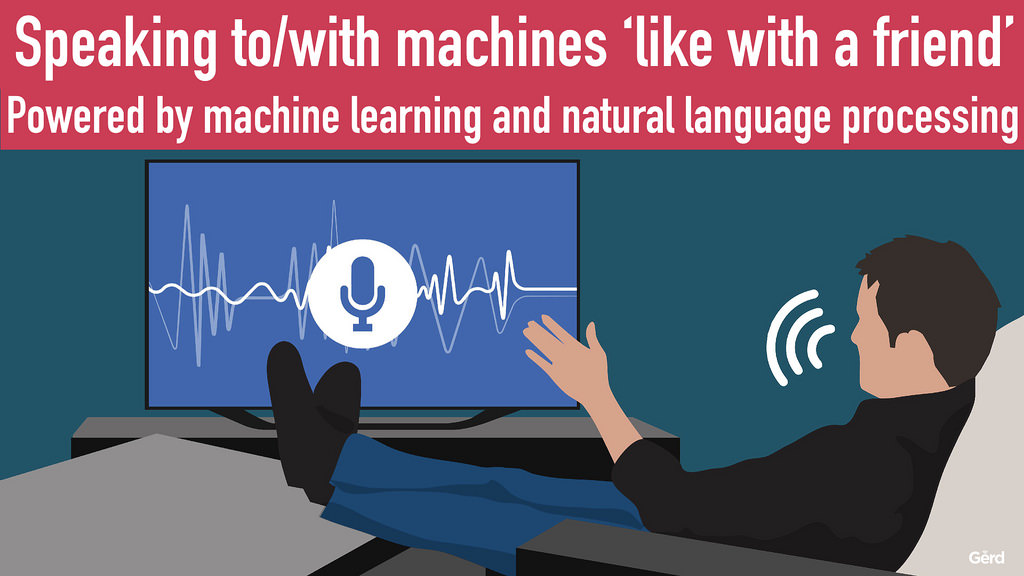ARTIFICIAL INTELLIGENCE NATURAL LANGUAGE PROCESSING
Unlike Machine learning, Natural language processing (NLP) has just been recently gaining an attention in the industry, though it has gained little attention in academics over the decades. At the realm of Artificial Intelligence is the Natural language processing (NLP) which computationally analyzing human language.
In today’s ever-increasing data-driven world where the stream of vital information never ends, the ability to handle large amounts of data becomes increasingly important and the norm in the Artificial Intelligence, no doubt, anyone, especially, experts could need or generate huge amount of information at any point in time. However, to differentiate between relevant and non-relevant information easily and quickly, also the issue of responding to newly obtained data of interest efficiently, always remain cumbersome tasks and a very big issues among the experts. Therefore, a lot of outstanding research with the view to alleviate and support an ever-increasing need of information by means of Natural Language Processing (NLP) has been conducted during the last decades.
In order to retrieve or process large amounts of data, it is desired to make use of machines. Although, human natural languages are definitely not machine like and thus there is highly need to perform Natural Language Processing (NLP).

[image credits: flickr]
Brief Background of Natural Language Processing (NLP)
Natural Language Processing (NLP) is clearly a sub field and tract of both Artificial Intelligence and Linguistics; it refers to Artificial Intelligence method of communicating with agents (Intelligent Systems) using human natural language such as English. Natural language processing eases the users work and satisfy the wish to communicate with the machine (computer) in human natural language. No doubt, all the users may not be well-versed in machine specific language, therefore, Natural Language Processing (NLP) caters for those users who do not have sufficient time to learn and adapt to machine specific language or get higher accuracy in it. Natural Language processing is always involved whenever you want an intelligent system such as 'a robot' to carry out certain instructions.
The input and output of Natural Language Processing (NLP) system can be Speech or Written text

[image credits: commons.wikimedia]
Why Natural Language Processing (NLP)
Nowadays, we all find Google, Siri or Cortana as our unfailing research friends to call upon whenever we need help, we ask simple questions or tasks and they are always there for us, they will even correct us by showing us alternatives, but much of their real potential is still untapped and utilized. The reason involves nothing than language and this is where Natural language processing (NLP) comes into play in Artificial Intelligence applications.
In fact, if we remove Natural language processing (NLP) from Artificial Intelligence, such machine will only understand the meaning of language and answer basic questions, but it will not understand the meaning of words in context. Natural language processing applications allow end users to communicate with a machine in their own natural worlds, i.e. in Natural language.
It helps in performing the following functions Spell and Grammar Checking
It helps in checking for spelling of the type word and completes the grammar by completing and suggesting an alternatives for the errors.
Word Prediction
It help to Predicts the next word that is highly probable to be typed by the user, though the process of predicting the next word might seem unnecessary if one considers Natural language processing (NLP) only in terms of processing word or text in terms of semantic understanding. However, Natural language processing (NLP) also involves in processing noisy data and checking for text errors. For instance, noisy data can be detected in handwriting recognition or speech, although, computer may not perfectly recognize words due to word ambiguity or unclear speech or handwriting that is totally different significantly from the computers model.
In addition, Natural language processing (NLP) can also be extended to perform task such as checking spell of user’s word in order to detect errors in which no word is mistyped or misspelled in case the user has mistakenly typed a word that she or he did might not intend.
For instance, In this sentence “After I typed my research article, I then ROSTED on steemit platform by simply clicked on the submit button,” ROSTED is not the intended word, but POSTED, it was simply mistyped. There is no way a spell checker will catch this type of error because both ROSTED AND POSTED are English words and can appear grammatically in that position. A Natural language processing (NLP) algorithm that could detect this error would definitely need to look beyond how and what letters form words but instead make an attempt to determine what word is fittingly fit in a given sentence.
Components of Natural language processing (NLP)
Basically, there are two main components of Natural Language processing (NLP)
Natural language understanding (NLU):
*It Maps the given input in human natural language into useful forms.
*It Analyzes different aspects of human natural language.Natural Language Generation (NLG): This is the process of extracting and producing useful and meaningful and relevant word phrases and sentences in the form of human natural language from the internal representation. It always involves
*Text planning: This includes retrieving and extracting the relevant content from knowledge base.and dicard the irrevelant ones.
*Sentence planning: Sentence planning includes choosing the required wordss, by setting tone of the sentence and making meaningful phrases,.
*Text Realization: This is a kind of mapping sentence plan directly into sentence structure.
CONCLUSSION
I will conclude today's post by looking at What can Developers Use Natural language processing (NLP) Algorithms For?
Natural language processing (NLP) algorithms based on machine learning algorithms. Rather than following a traditional programming by hand-coding a very large sets of rules, Natural language processing (NLP) can rely on machine learning algorithms to automatically forming a patterns by learning the rules through analyzing a set of examples(huge amount of data) and making a statistical inference from the data set. In short, the more data available for analysis, the more accurate the result will be.
To summarize blocks of word or text using Summarizer in order to extract the most crucial and central ideas while ignoring irrelevant information.
Experts recommend that one should create a chat bot using ParseyMcParseface, since it is a language parsing deep-learning model invented by Google and is using Point-of-Speech tagging.
References
1. Introduction to Natural Language Processing (NLP)
2. Natural Language Processing (NLP) Techniques for Extracting Information
"Cruising the Data Ocean" Blog Series - Part 4 of 6
3. Natural Language Processing
4. Natural Language Processing
5. F. Hogenboom, F. Frasincar& U. Kaymak (2010). An Overview of Approaches to Extract Information from
Natural Language Corpora
6. AI - NATURAL LANGUAGE PROCESSING
7. Natural Language Processing Artificial Intelligence
8. Lkit: A Toolkit for Natuaral Language Interface Construction
*All images are from free source websites except the self taking ones
010101010101010101010101010101010101010101010101010101010101010101
Thanks for reading through, your thoughts are important.
Until my next post,
keep on sending zeroes and ones.
If you write STEM (Science, Technology, Engineering, and Mathematics) related posts, consider joining #steemSTEM on steemit chat or discord here. If you are from Nigeria, you may want to include the #stemng tag in your post. You can visit this blog by @stemng for more details. You can also check this blog post by @steemstem here and this guidelines here for help on how to be a member of @steemstem. Please also check this blog post from @steemstemonproper use of images devoid of copyright issues here.



Hello @noble-noah, please consider using shorter paragraphs as big blocks of text makes for a difficult read.
Thanks @stemng team for your careful observation and future recommendation.